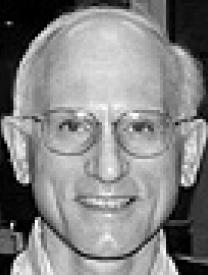- 2001-2009 Chair, Department of Physics and Astronomy, University of Pennsylvania
- 2001 Poste Rouge au CNRS, Ecole Normale Supérieure, Lyon, France
- 1998 Mary Amanda Wood Chair of Physics, University of Pennsylvania
- 1998-2001 Associate Director, Laboratory for Research in the Structure of Matter, University
of Pennsylvania - 1990-95 Consultant EXXON Research and Engineering, Annandale, New Jersey
- 1989-90 Visiting Research Associate at the Ecole Supérieure de Physique et de Chimie
- Industrielles (ESPCI), Paris (Poste Rouge au CNRS)
- 1981-82 Visiting Professor at the Ecole Normale Supérieure, Paris, France
- 1980 Professor, University of Pennsylvania
- 1976 Research Associate, Harvard University
- 1975-80 Associate Professor, University of Pennsylvania
- 1971-75 Assistant Professor, University of Pennsylvania
- 1970-71 Postdoctoral Fellow, Brown University
- 1969-70 NSF Postdoctoral Fellow, University of Paris, Orsay, France
Honors include:
- 2004 Honored Member of the International Liquid Crystal Society
- 2004 Oliver E. Buckley Prize of the American Physical Society
- 2002 Elected to the National Academy of Sciences
- 2000 Fellow, American Association for the Advancement of Science
- 1985 Fellow, American Physical Society
- 1981 Guggenheim Fellow
- 1975-77 Alfred P. Sloan Fellow
Ph.D., Harvard University (1969)
M.A., Harvard University (1965)
B.S., California Institute of Technology (1964)
My research focuses on "soft" materials such as liquid crystals, membranes, vesicles, Langmuir films, and the many realizations of complex fluids such as microemulsions. My approach to the study of these materials is phenomenological: their properties at length scales several times molecular lengths can be described by effective free energies and by hydrodynamical equations, which depend only on the symmetry and conservation laws of their equilibrium phases. Associated with each thermodynamic phase are elastic rigidities, low-frequency hydrodynamics modes, and topological defects that are collectively responsible for most of the remarkable properties of soft materials. Thus, to understand the properties of any given phase (such as for example, the lamellar phase of a lyotropic liquid crystal), one needs to identify broken symmetries and conservation laws to determine harmonic long-wavelength elasticity and hydrodynamics. Then, one needs to investigate the effects of thermal fluctuations on the naive harmonic theories. Thermal fluctuations are almost by definition strong in soft systems, and they can lead to significant modifications of harmonics theories, which are best studied using field theories and the renormalization group. I have used these techniques to predict a new phase of matter in chiral liquid crystals in which there is a regular array of twist grain boundaries separating layered smectic-A slabs, whose layer normal rotates in a helical fashion along a pitch axis parallel to the plane of the layers. This twist-grain-boundary (TGB) phase is the analog in liquid crystals of the Abrikosov vortex lattice phase in superconductors. I have studied the fluctuations of two-dimensional "fishnet" solids and found that coupling to the capillary or height mode leads to an anomalous elasticity in which the long wavelength bulk and shear moduli renormalize to zero. I have also investigated topological defects and topologically induced interactions in liquid crystalline colloids and emulsions, the microscopic origin of chiral interactions in liquid crystals, chiral phases in polymeric and discotic liquid crystals, and interactions between colloidal particles dispersed in DNA solutions. My recent research activities include investigations of new "sliding phases" of matter, microrheology, liquid crystalline elastomers, and flow of granular material. Sliding phases occur in 3D stacks of two-dimensional systems, such as xy-models, crystals, or 2D smectics, with a continuous symmetry. They behave like two-dimensional systems with power-law decay of correlations even though they are coupled in three dimensions. Microrheology is a technique that measures the complex shear moduli of viscoelastic media from the response and fluctuations of colloidal beads dispersed in them. It can be used on smaller samples than, and it provides information at higher frequency than standard rheological techniques. Nematic elastomers combine the elastic properties of rubber with the orientational order of a nematic liquid crystal. They exhibit a remarkable soft elasticity, brought about by a spontaneous broken symmetry, in which a shear modulus measuring the energy of strains in planes containing the anisotropy axis vanishes. Granular material can flow like a fluid when it is subjected to a sufficiently large shear. I have developed hydrodynamics theories to describe this flow including the flow of a two-dimensional gas of chiral rattlebacks.
Phys 230: Principles III
Phys 240/250: Principles IV: Modern Physics
- Principles of Condensed Matter Physics, P. M. Chaikin and T.C. Lubensky (Cambridge University Press, Cambridge, 1995)
- Ye, Fangfu; Mukhopadhyay, Ranjan; Stenull, Olaf ; and Lubensky, T. C., Semi-soft Nematic Elastomers and Nematics in Crossed Electric and Magnetic Fields, Phys. Rev. Lett. 98, 147801/1-4 (2007)
- Han, Y., Alsayed, A. M., Nobili, M., Zhang, J., Lubensky, T. C., and Yodh, A. G., Brownian Motion of an Ellipsoid, Science 314, 626-630 (2006)
- Lubensky, T.C., Mukhopadhyay, R., Radzihovsky, L., and Xing, X.J., "Symmetries and elasticity of nematic gels," Physical Review E 66, 011702/1-22 (2002).
- Bocquet, L., Errami, J., and Lubensky, T.C., "Hydrodynamic model for a dynamical jammed-to-flowing transition in gravity driven granular media," Physical Review Letters 89, 184301/1-4 (2002).
- Emery, V.J., Fradkin, E., Kivelson, S.A., and Lubensky, T.C., "Quantum theory of the smectic metal state in stripe phases," Physical Review Letters 85, 2160-2163 (2000).
- Harris, A.B., Kamien, R.D., and Lubensky, T.C., "Molecular chirality and chiral parameters," Rev. Mod. Phys. 71, 1745-57 (1999).
- O'Hern, C.S. and Lubensky, T.C., "Sliding columnar phase of DNA lipid complexes," Physical Review Letters 80, 4345-4348 (1998).
- Poulin, P., Stark, H., Lubensky, T.C., and Weitz, D.A., "Novel colloidal interactions in anisotropic fluids," Science 275, 1770-1773 (1997).
- Golubovic, L. and Lubensky, T.C., "Nonlinear Elasticity of Amorphous Solids," Physical Review Letters 63, 1082-1085 (1989).
- Renn, S.R. and Lubensky, T.C., "Abrikosov Dislocation Lattice in a Model of the Cholesteric to Smectic-A Transition," Physical Review A 38, 2132-2147 (1988).

